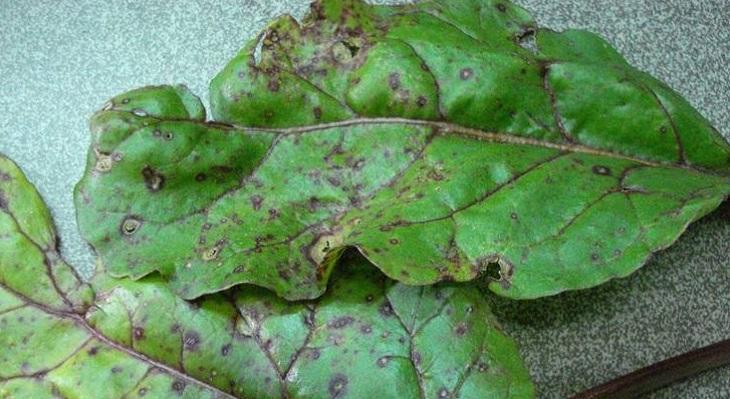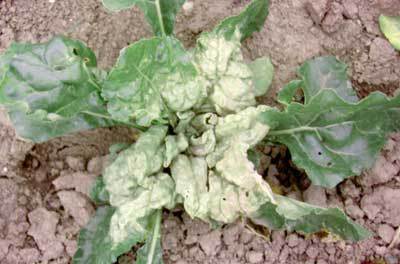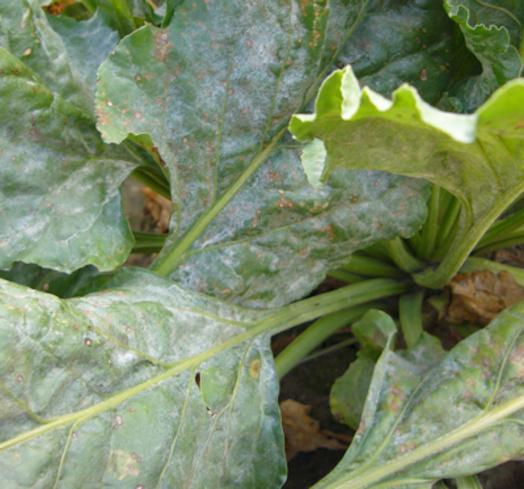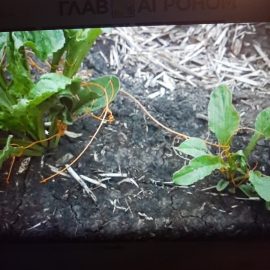Sugarbeet downy mildew (Peronospora farinosa f.sp.betae) – identify and control

Sugarbeet downy mildew, Peronospora farinosa f. Sp. Betae, can appear in cold and humid springs and causes significant damage, up to 15%, to the production of roots and 25% to the sugar content. Infected seedlings rot during storage in silos.



Symptoms. Sugarbeet downy mildew can attack the newly grown sugarbeets. On this, there is a yellowing associated with the formation of a gray-purple down on their underside. In this first phase of the attack, the fungus can cause the death of plants. However, the classic symptoms appear on seed plants. On the young leaves in the center of the rosette, there is a yellowing followed by the wrinkling and twisting of the leaf from the edges to the lower part, where the gray-purple fuzz appears. The plant after the destruction of young leaves forms new leaves. The floral stem of the attacked plants has a short axis, with flowers grouped in bunches, browned. And as a result, the plants can dry out prematurely.
The pathogen is Peronospora farinosa. The first infections are found on the leaves of beet from the seed culture, the attack starting from the affected cuttings. The pathogen spreads during the growing season through the spores that appear on the gray-purple mycelium. Secondary infections can occur several times a year depending on the temperature (spores appearing at temperatures of 0-28°C, with an optimum at 6°C) and the precipitation that favors the infection. From one vegetation cycle to another, the pathogen resists in the form of an infectious mycelium in cuttings and seeds or the form of resistance spores.
Prevention and control. Only seeds from certified lots in which the pathogen has not been reported will be used for sowing. In seed crops, repeated treatments will be made (especially in cold and wet springs) with specific fungicides.
If the attack is sporadic, the attacked plants will be destroyed. In autumn, when harvested, the vegetable remains after harvesting the beet tops will be silage, and those from the seed crops will be burned to reduce the number of remaining spores.
Recommended products
-
You can find products on a different store
Change Store -
You can find products on a different store
Change Store -
You can find products on a different store
Change Store -
You can find products on a different store
Change Store -
You can find products on a different store
Change Store -
You can find products on a different store
Change Store -
You can find products on a different store
Change Store -
You can find products on a different store
Change Store -
You can find products on a different store
Change Store -
You can find products on a different store
Change Store -
You can find products on a different store
Change Store -
You can find products on a different store
Change Store -
You can find products on a different store
Change Store -
You can find products on a different store
Change Store -
You can find products on a different store
Change Store -
You can find products on a different store
Change Store -
You can find products on a different store
Change Store -
You can find products on a different store
Change Store -
You can find products on a different store
Change Store -
You can find products on a different store
Change Store -
You can find products on a different store
Change Store -
You can find products on a different store
Change Store -
You can find products on a different store
Change Store -
You can find products on a different store
Change Store
















































































































































































































































































































































































































































